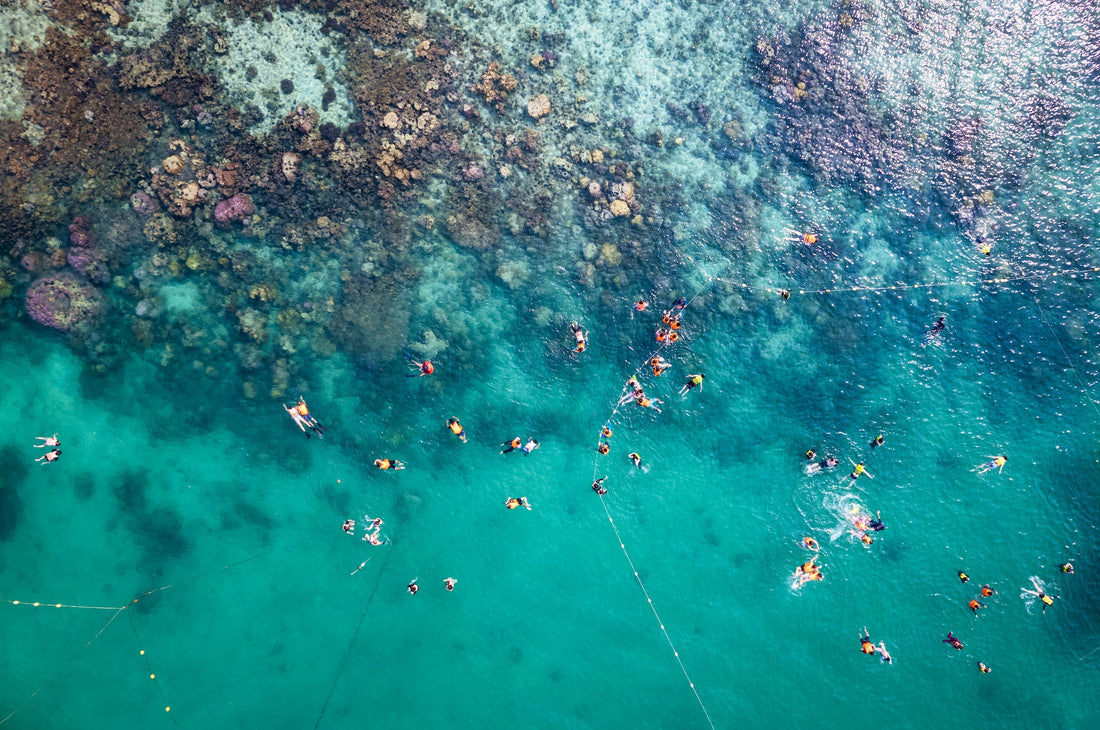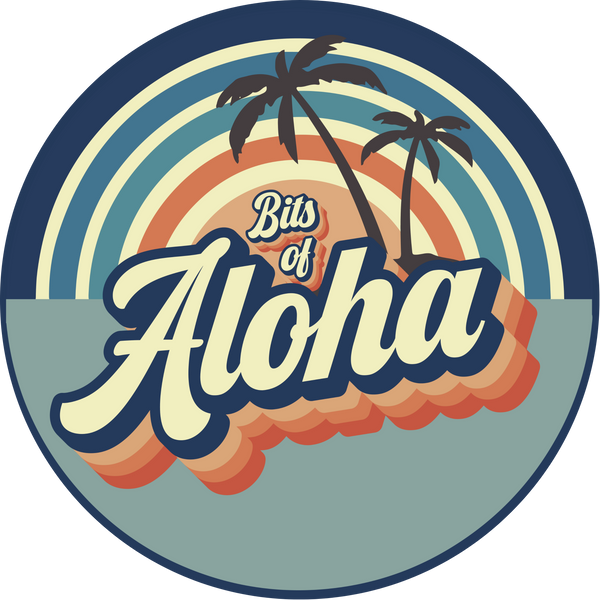
Best Snorkeling & Diving on the Big Island
Share
The Best Snorkeling and Diving Spots on the Big Island of Hawai‘i
The Big Island of Hawai‘i—officially known as Hawai‘i Island—is as diverse beneath the waves as it is above them. With its mix of new lava flows, ancient reefs, and clear waters, it offers some of the most unique snorkeling and scuba diving experiences in the state. From gentle bays perfect for beginners to once-in-a-lifetime night dives with manta rays, the Big Island is a dream destination for ocean explorers.
This guide highlights the best snorkeling and diving spots on the Big Island, including what you can expect to see, where to go, and insider tips for each location.
Why the Big Island Is Unique for Snorkeling & Diving
Hawai‘i Island is geologically the youngest and largest of the Hawaiian Islands. Its volcanic coastline and relatively undeveloped shoreline make it an underwater playground for all experience levels.
What sets the Big Island apart:
- Manta ray night dives—found nowhere else in the world quite like this
- Excellent visibility, especially on the Kona (west) coast
- A mix of shallow coral reefs, lava tubes, and steep drop-offs
- Fewer crowds than O‘ahu or Maui, offering more serene underwater experiences
Top 5 Snorkeling Spots on the Big Island
1. Kealakekua Bay (South Kona)
Best for: Crystal-clear water, vibrant coral reefs, rich history
What to expect:
Located beneath the Captain Cook Monument, Kealakekua Bay is widely considered the best snorkeling spot in all of Hawai‘i. The marine life here is abundant—schools of yellow tangs, butterflyfish, parrotfish, and sometimes spinner dolphins.
Pro Tips:
- Accessible by kayak, boat tour, or a steep hike (the hike is ~4 miles roundtrip).
- Morning hours offer the best visibility.
- This is a Marine Life Conservation District—take only photos, leave only bubbles.
2. Honaunau Bay (Two Step)
Best for: Easy access, beginner-friendly conditions
What to expect:
Nicknamed “Two Step” because of the natural lava rock entry, this spot near Puʻuhonua o Hōnaunau National Historical Park offers immediate access to coral gardens, sea turtles, and colorful reef fish.
Pro Tips:
- Arrive early for parking and calm waters.
- Bring reef shoes for the lava rock entry.
- Keep an eye out for spinner dolphins resting in deeper water offshore.
3. Kahaluʻu Beach Park (Kailua-Kona)
Best for: Family-friendly snorkeling, close to town
What to expect:
Kahaluʻu is one of the best snorkel spots in Kona for beginners and children. A breakwater keeps waves low, and the reef inside is teeming with fish and turtles.
Pro Tips:
- Easy street parking and restrooms available.
- Lifeguards often present.
- Reef is shallow—float and never stand on coral.
4. Richardson Ocean Park (Hilo)
Best for: Snorkeling on the Hilo (east) side
What to expect:
Hilo side beaches are more affected by rain and surf, but Richardson’s offers protected tide pools and lava rock coves ideal for calm-day snorkeling.
Pro Tips:
- Visibility varies—go when the water is clear.
- Look for honu (green sea turtles) and colorful wrasses.
- Good spot to pair with a visit to Liliʻuokalani Park or Hilo Farmers Market.
5. Mauna Lani Bay (South Kohala)
Best for: Calm conditions and easy beach access
What to expect:
This resort area features some of the calmest waters on the island and healthy reef systems perfect for casual snorkelers. Access is through a public beach path.
Pro Tips:
- Limited public parking—go early.
- Bring your own snorkel gear.
- Bonus: You may spot eagle rays gliding near the sea floor.
Top 3 Diving Experiences on the Big Island
1. Manta Ray Night Dive (Kona Coast)
Best for: Bucket-list diving, intermediate to advanced divers
What to expect:
This world-famous experience is exclusive to the Big Island. Divers (and snorkelers) gather after sunset near Kona to watch giant manta rays—some with wingspans over 12 feet—gracefully loop and feed on plankton illuminated by dive lights.
Pro Tips:
- Several dive operators run tours from Kona; book early.
- Snorkel version also available for non-divers.
- Mantas are wild animals—don’t touch or chase.
2. Crescent & Suck ‘Em Up Caves (South Kona)
Best for: Advanced divers, lava tube lovers
What to expect:
These interconnected caves are formed from ancient lava flows and offer one of the most thrilling dives on the island. Inside, you’ll see lava chimneys, arches, and occasional sightings of white-tip reef sharks.
Pro Tips:
- Only go with a certified dive guide.
- Conditions can change rapidly—check the forecast.
- Bring a dive light for the inner chambers.
3. Puako Wall (Kohala Coast)
Best for: Shore diving, coral biodiversity
What to expect:
This gently sloping reef wall near Puako is great for shore dives and features overhangs, ledges, and healthy coral. Sea turtles and moray eels are common sightings.
Pro Tips:
- Limited facilities—pack in what you need.
- Good for experienced snorkelers too, especially during calm seas.
- Visibility often 80–100 feet.
Where to Spot Sea Turtles on the Big Island
Green sea turtles (honu) are abundant in Big Island waters. Some of the best places to see them while snorkeling or diving include:
- Honaunau Bay (Two Step)
- Kahaluʻu Beach Park
- Punaluʻu Black Sand Beach (often seen basking on shore)
- Mauna Lani Resort shoreline
Always keep a respectful distance—at least 10 feet (3 meters)—and never touch or feed turtles.
Snorkeling & Diving Tips for Hawai‘i Island
-
Best Time to Go:
West coast (Kona side) offers year-round clarity. Summer is calmest, but winter also has good conditions—just avoid surf-heavy days. -
Go Early:
Morning hours provide the calmest seas, best light, and fewer crowds. -
Reef-Safe Sunscreen Only:
Help protect Hawai‘i’s fragile coral ecosystems. -
Respect Marine Life:
Avoid standing on coral, chasing animals, or feeding fish. -
Book with Local Operators:
Especially for dive tours, choose certified and locally owned companies with a strong conservation ethic.
Final Thought
Whether you're peering into a tide pool in Hilo or diving with giant manta rays off the Kona Coast, the Big Island offers some of the most magical and memorable snorkeling and diving experiences in all of Hawai‘i.
Its underwater world is as dramatic as its volcanoes—full of color, life, and a quiet sense of wonder. So grab your fins, pack your mask, and dive into the Big Island’s wild side. You won’t forget it.
